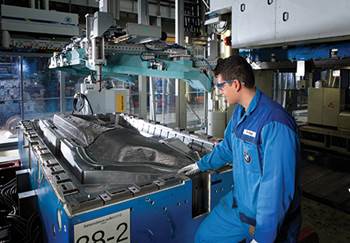Search Results
Showing 71 – 80 of 100 results
A confluence of aircraft OEM technical innovation and economic pressures on their airline customers creates increasingly favorable market conditions for aerospace composites.
In the process of designing its G128 wind turbine blade and the INNOBLADE segmented blade technology that simplifies its transport (see “Modular design eases big wind blade build,” under “Editor’s Picks,” at top right), Gamesa (Vizcaya, Spain) has introduced several innovative auxiliary technologies that reduce cost and simplify processing, particularly in the context of blade delivery and installation.
There are numerous methods for fabricating composite components. Selection of a method for a particular part, therefore, will depend on the materials, the part design and end-use or application. Here's a guide to selection.
Airbus subsidiary for Industry 4.0 composites plus new products, processes and resources on display.
Managing production of a structure made via fiber or tape placement often requires software-aided manipulation of the subtle differences between that which is designed and that which can be manufactured.
InFactory Solutions commercializes technology to provide real-time resin impregnation and cure data across composite parts for zero-defect, intelligent process chains.
Aurora Flight Sciences and NONA Composites aim to improve toughness, repeatable aerospace quality and affordability for large-scale NASA structures.
Advanced systems offer ply-placement verification, aids to faster assembly and manufacturing process and quality control.
Which is better for in-situ consolidated thermoplastic composite primary structures? Materials play a part as to whether a one-step or two-step process will prevail.
Composites enable high performance and lower weight in washtubs, wheelchairs and engine exhaust cones. Plus new, ultralight materials.








